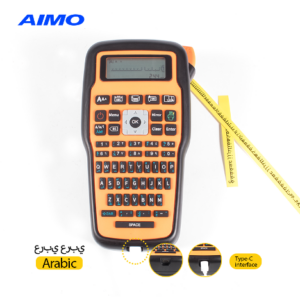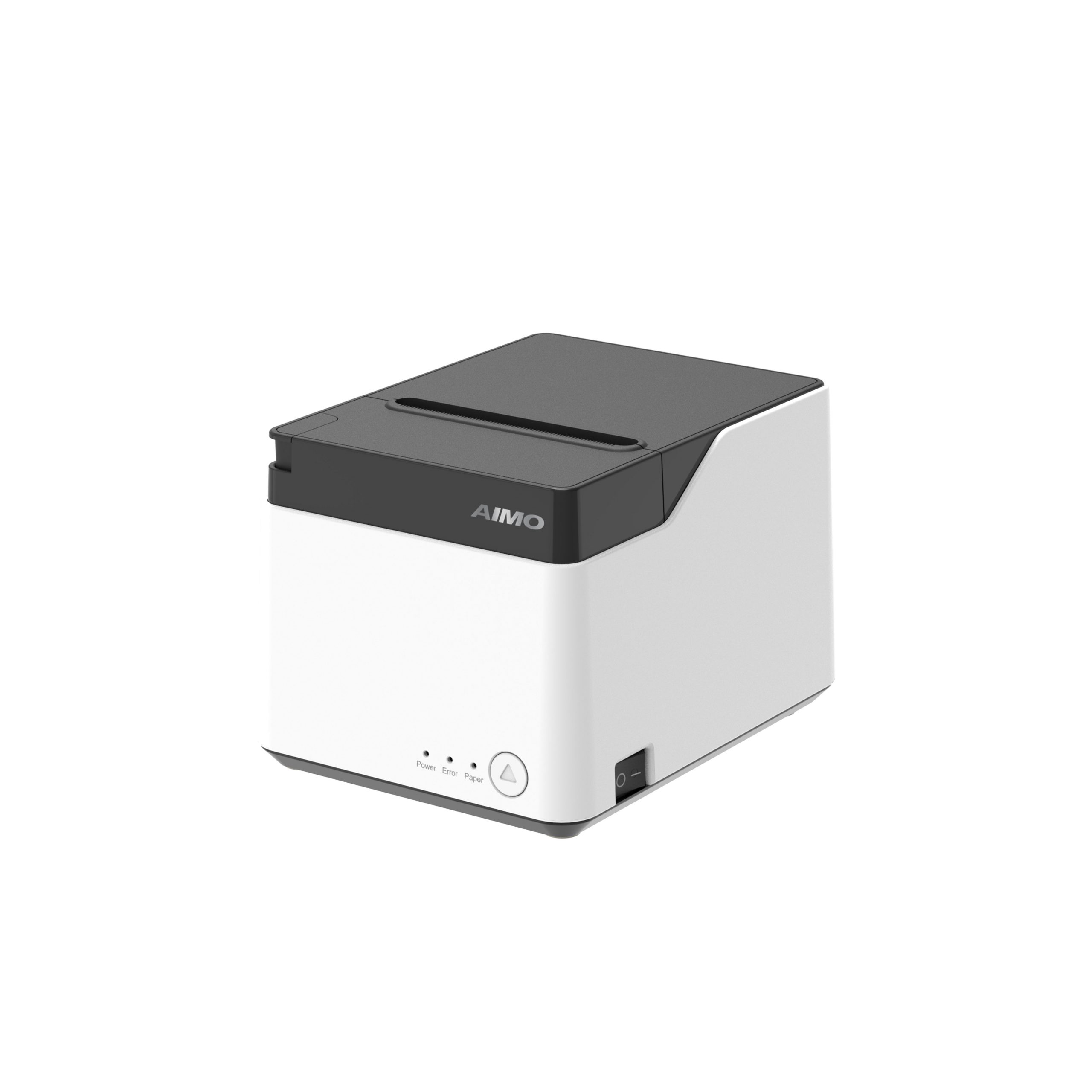Label printing plays a crucial role in various industries, for some being a must. It ensures products, packages, and assets are correctly identified and tracked. There are two mainstream label printing technologies: thermal transfer and direct thermal printing. These technologies are pivotal in various industries for printing barcodes, text, and images. It is helpful to help you select the ideal label printer for your application by understanding the differences between these two printing technologies. This article will help you to know everything by comparing thermal transfer vs direct thermal label printers. Let’s see!

Define Thermal Transfer and Direct Thermal Printing Technologies
The definition can let you understand better when comparing thermal transfer vs direct thermal printing technologies:
Thermal Transfer Printing
This technology uses a heated ribbon to produce durable, long-lasting images on various label materials. The heat from the printer’s print head melts ink from the ribbon onto the label, creating a printed image.
Direct Thermal Printing
It does not use ribbon, ink, or toner but requires a special type of heat-sensitive material—heat-sensitive paper that darkens when heated by the print head. The process of direct thermal printing is simple and cost-effective, but its label’s longevity is short.
Thermal Transfer VS Direct Thermal Printing: The Comparison of Working Mechanism
From the definition, you must grasp some ideas on the working procedure of these printing technologies. Talking specifically, there are differences in the working mechanism when comparing the thermal transfer vs. direct thermal:
1. Thermal Transfer Printing Mechanism
Heating the Ribbon: As slightly mentioned above, in thermal transfer printing, a thermal print head is used to heat a ribbon coated with ink (made from wax, resin, or a combination of both). The heating elements in the print head are arranged as a matrix of small dots that can be individually controlled.
Transferring Ink: When the ribbon passes over the material (typically paper or a synthetic substrate), the areas of the ribbon heated by the print head melt and transfer ink onto the material underneath. The process is precise, allowing for detailed and high-quality prints.
Peeling Off: The ribbon (which acts as a carrier of the ink) peels away, leaving the desired text or images on the substrate. This step ensures that only the ink adheres to the label material while the used ribbon is taken up by a ribbon reel.
Cost: Direct thermal printing may have lower upfront costs due to the absence of ribbons but might not be suitable for applications where label longevity and resistance are crucial.
2. Direct Thermal Printing Mechanism
Heating the Paper: Direct thermal printing machine does not use a ribbon. Instead, it directly heats areas of special thermochromic (heat-sensitive) paper. The print head, similar to that used in thermal transfer, has many small heating elements.
Chemical Reaction: The areas of the thermal paper that are heated by the print head undergo a chemical reaction that turns them black (or another color, depending on the paper used). This forms the images or text directly on the paper.
Immediate Image Formation: As the paper exits the printer, the printed image is already formed. There is no ink or toner involved, and the image appears as a result of the direct heating of the paper.
Comparing the Working Mechanism of Direct Thermal VS Direct Thermal Printing
Consumables: Thermal transfer label printer requires a ribbon, and direct thermal uses heat-sensitive paper.
Durability: Thermal transfer printouts are more durable and resistant to environmental factors than direct thermal printouts.
Cost: Direct thermal printing may have lower upfront costs due to the absence of ribbons but might not be suitable for applications where label longevity and resistance are crucial.
Thermal Transfer VS Direct Thermal Printing: The Comparison of User Experience
For understanding the differences in user experience better in order to choose thermal transfer vs direct thermal printing, here’s a chart you can follow:
|
Aspect |
Thermal Transfer Printing |
Direct Thermal Printing |
|
Easier to Use |
|
√ |
|
Quicker Setup Time |
|
√ |
|
Faster Print Speed |
|
√ |
|
Lower Maintenance |
|
√ |
|
Higher Printing Quality |
√ |
|
|
Higher Cost of Supplies |
√ |
|
|
More Versatile |
√ |
|
|
Lower Environmental Impact |
|
√ |
|
More Suitable for Long-term Use |
√ |
|
Thermal Transfer VS Direct Thermal Printing: The Comparison of Applications
For Direct Thermal Printing
- Supermarkets: Direct thermal printers are efficient and cost-effective for high-volume and short-term labeling. They provide clear print quality for barcodes and text, ensuring easy scanning at checkout. That’s why these printers are ideal for supermarkets where shopping receipts, price tags, and short-term labels are in the high volume required.
- Restaurants: In restaurants, direct thermal printers are ideal for quickly printing order tickets and food labels. Their simplicity and low maintenance make them perfect for fast-paced kitchen environments where durability is less critical.
- Logistics: Logistics operations benefit from the speed and efficiency of direct thermal printers for producing shipping and tracking labels. These labels typically have a short lifespan, making the cost savings from not using ribbons advantageous.

For Thermal Transfer Printing
- Industrial Manufacturing: Thermal transfer printers can withstand harsh conditions such as abrasion, chemicals, and extreme temperatures. They produce long-lasting, high-quality labels that maintain readability over time. That’s why it is it is ideal for printing durable printing labels. Identification tags, compliance labels, etc.
- Automotive: Automotive parts require labels that can endure high heat, oil, and other challenging conditions. Thermal transfer printing provides the durability and resilience needed for these applications, ensuring labels remain intact and legible throughout the product’s lifecycle.
- Communication: It is ideal for Labeling cables, wiring, and electronic devices. The communication industry relies on thermal transfer printers for labeling cables and electronic components. These labels must be durable to resist environmental factors and maintain clear identification for safety and maintenance purposes.

AIMO’s E1000 Pro: Experience a Great Thermal Transfer Technology
When comparing thermal transfer VS direct thermal printing technologies, there are always pros and cons. You should consider your scenarios and the printing quality you want. If you have decided to invest in a thermal transfer label printer to meet your printing demands in automotive, communication infrastructure, and more, our Aimo’s E1000 Pro is ideal. This is a handheld printer for labels, providing high-quality, durable labels. It features advanced precision printing technology, robust long-term use construction, and user-friendly interfaces for seamless operation. Here’s why:

- A robust technology, thermal transfer, to print long-life labels for harsh or significant environment
- A printing speed of 20mm/s to enhance the working efficiency
- A printing resolution of 180 DPI to create a high-quality printing result
- A simple QWERTY keyboard to type fast
- A smart key to switch over 22 languages, 400 + symbols, 4 frames, and 3 font sizes
- A handheld design with 450g to make you an effortless typing experience
- An easy way to charge the battery by connecting a Type-C cable or using 6 AAA batteries
Conclusion
There are some differences between thermal transfer vs direct thermal printing technologies in working mechanisms, user experience, and applications. Each has its own merit. No matter which type of printer you want, we, AIMO, can always deliver the best printer for your demands. We are one of the most reliable thermal transfer and direct thermal printer manufacturers and have been serving the industry for over a decade. So, feel free to contact us or visit our official website to learn more about printers!












































